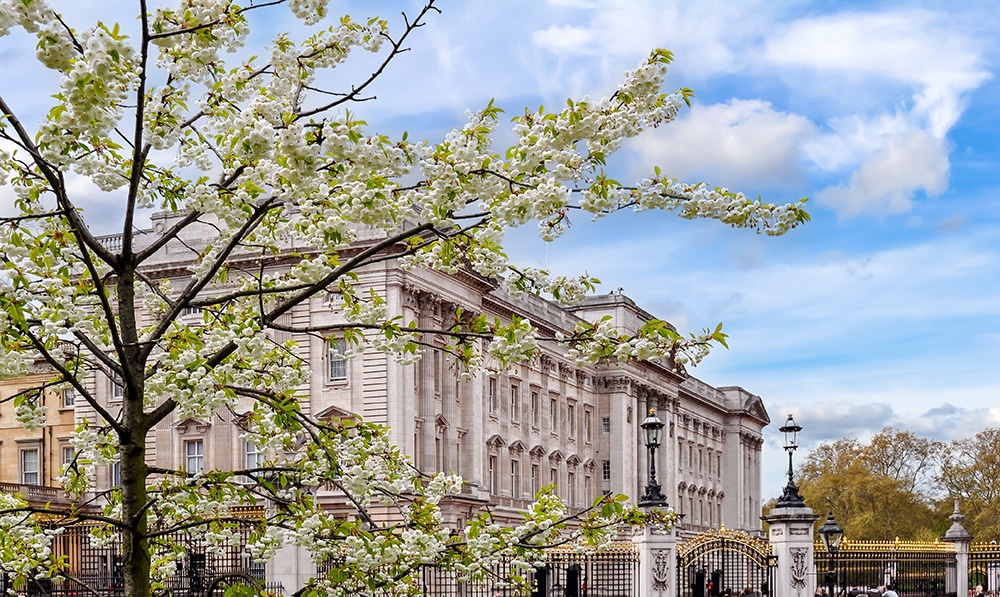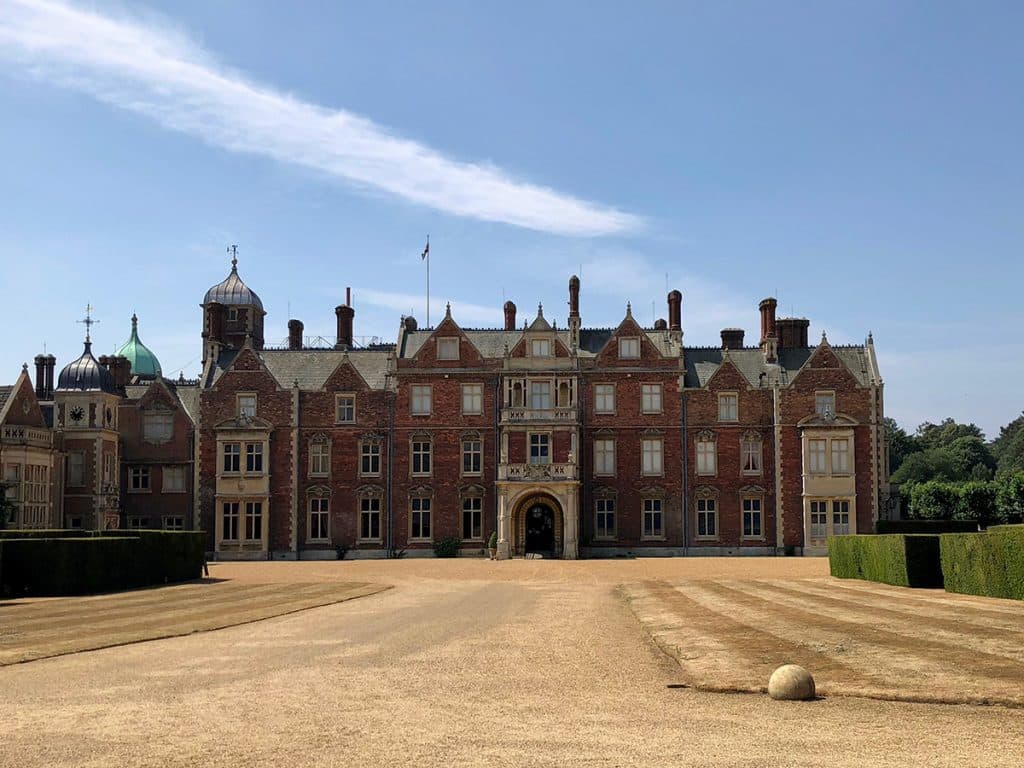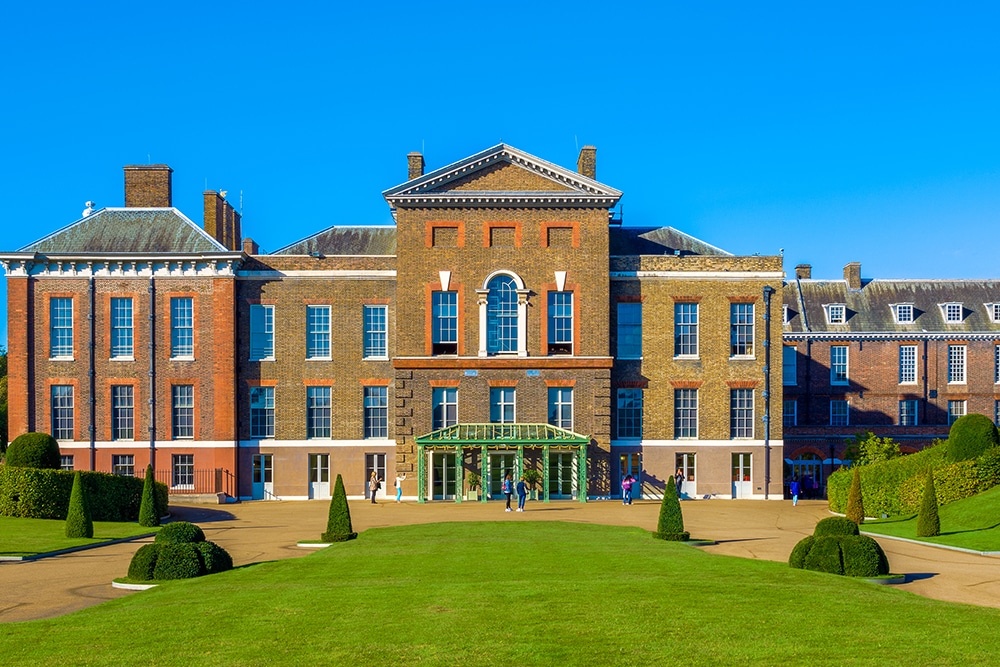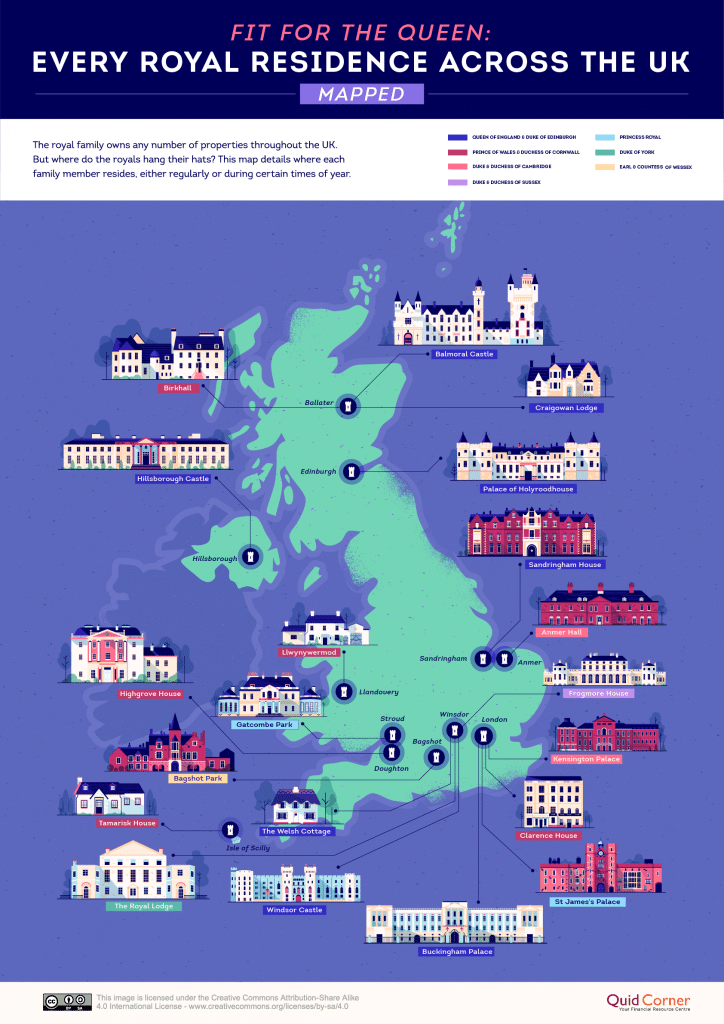Platinum Jubilee feature: A royal property portfolio with many different styles
At Ventrolla, we wanted to mark the occasion of the Queen’s Platinum Jubilee. And as a heritage building specialist, what better way than with a look at some of the Royal Family’s most iconic royal property and their architectural history? They own stunning homes all over the UK (some of which we may have even been lucky enough to work in…shhhh…), but we’ve picked out ten of the most famous.
Balmoral Castle
Bought by Prince Albert for Queen Victoria in 1852, the structure we see today in Aberdeenshire was built next to the original castle, to make room for the royal family and their staff. A version of 19th century ‘Scotch Baronial’ architecture, it features round towers and turrets and is made of local grey granite quarried from Invergelder on the estate.
Buckingham Palace
Originally built as Buckingham House in London in 1703, this property was built in the neoclassical French style, inspired by the buildings of Ancient Greece and Ancient Rome. During the 19th century it was enlarged, largely thanks to architects John Nash and Edward Blore. The exterior is made from Bath stone and the East front of the palace was refaced in Portland stone in 1913.

Sandringham House
Completed in 1871, the Sandringham House that’s here today was designed by local architect, AJ Humbert – in a Jacobean country hall style with gables, cupolas, a turret and stone bay windows. The Norfolk property also has some late nineteenth century extensions, including the right wing of the building.

Windsor Castle
The present day castle is a hybrid of Georgian and Victorian design, based on a medieval structure, with Gothic features reinvented in a modern style. Neglected through the 18th century, George III and George IV renovated and rebuilt Charles II’s palace at great cost, resulting in the current design and the state apartments are packed with Rococo, Gothic and Baroque furnishings.
Highgrove House
Highgrove house is set in Gloucestershire, was built in the late 1700s in Georgian neoclassical style, most likely designed by architect Anthony Keck, a local mason. It was remodelled by Prince Charles when he bought it in 1980. It’s now his family home, close to Duchy Home Farm.
Clarence House
Designed by John Nash in the 1820s, Grade I listed Clarence House has been altered many times over the years so it now looks very different to its original form. The official London residence of Charles and Camilla since 2002, following the death of the Queen Mother, it’s a four-storey building with a pale stucco finish.
St James’s Palace
This red brick Tudor building with four courtyards is the official residence of Princess Anne. Built in the 1530s by Henry VII on the site of a leper hospital, much if it remains today including the gatehouse on the north side, with turrets featuring mock battlements, now fitted with Georgian sash windows.
Kensington Palace
This 20-bedroom property began life in the 17th century as a villa in the then rural village of Kensington – but has had many additions over the years so its architectural style is difficult to pin down. Back in 1689, King William III and Queen Mary bought the mansion for £20,000 and commissioned Sir Christopher Wren to expand it. It’s now the home of the Duke and Duchess of Cambridge and their children.

Bagshot Park
This Grade II listed 120-room Tudor Gothic mansion, 11 miles south of Windsor, was previously a hunting lodge and is now home to the Earl and Countess of Wessex. Queen Victoria originally had the property built for her son, Prince Arthur, in the 1870s.
Llwynywermod
This is the first royal home in Wales since the English Civil War. Owned by the Duchy of Cornwall, the 192 acre estate in Carmarthenshire was bought in 2006-2007. The white washed farmhouse, created from a group of estate buildings erected in about 1800, was renovated at that point to create the current residence – once part of the larger manor house, which is now in ruins.
You can find a helpful infographic map, detailing royal property, here:

Do your windows need the royal treatment?
We’ve been renovating sash windows in iconic buildings like these for four decades, so if your windows need the royal treatment and some VLC (Ventrolla Loving Care) then our helpful and friendly team are on hand to chat to you about your renovation project. You can enquire online here, email info@ventrolla.co.uk or call 0800 378 278 to find out more.
